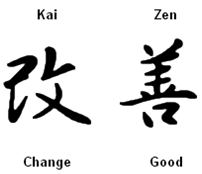The PDSA (Plan-Do-Study-Act) Technique for Quality Improvement
April 3, 2025
 The PDSA (Plan-Do-Study-Act) Technique for Quality Improvement
The PDSA (Plan-Do-Study-Act) Technique for Quality Improvement
What is the PDSA Technique ? The PDSA or the Plan-Do-Study-Act technique is a famous QI or Quality Improvement Tool or Initiative that helps organizations enhance the quality of their products and services. The PDSA technique hinges on the iterative process wherein each cycle begins with planning the quality improvement, actualizing the method or the…
 Total Quality Management Models
Total Quality Management Models
Total Quality Management is a combined effort of both top level management as well as employees of an organization to formulate effective strategies and policies to deliver high quality products which not only meet but also exceed customer satisfaction. Total Quality management enables employees to focus on quality than quantity and strive hard to excel…
 Six Sigma and Quality Management
Six Sigma and Quality Management
Six Sigma is a business management strategy which aims at improving the quality of processes by minimizing and eventually removing the errors and variations. The concept of Six Sigma was introduced by Motorola in 1986, but was popularized by Jack Welch who incorporated the strategy in his business processes at General Electric. The concept of…
“Kaizen” refers to a Japanese word which means “improvement” or “change for the better”. Kaizen is defined as a continuous effort by each and every employee (from the CEO to field staff) to ensure improvement of all processes and systems of a particular organization.
Work for a Japanese company and you would soon realize how much importance they give to the process of Kaizen. The process of Kaizen helps Japanese companies to outshine all other competitors by adhering to certain set policies and rules to eliminate defects and ensure long term superior quality and eventually customer satisfaction.
Kaizen works on the following basic principle.
“Change is for good”.
Kaizen means “continuous improvement of processes and functions of an organization through change”. In a layman’s language, Kaizen brings continuous small improvements in the overall processes and eventually aims towards organization’s success. Japanese feel that many small continuous changes in the systems and policies bring effective results than few major changes.
Kaizen process aims at continuous improvement of processes not only in manufacturing sector but all other departments as well. Implementing Kaizen tools is not the responsibility of a single individual but involves every member who is directly associated with the organization. Every individual, irrespective of his/her designation or level in the hierarchy needs to contribute by incorporating small improvements and changes in the system.

Following are the main elements of Six Sigma:
“Five S” of Kaizen is a systematic approach which leads to foolproof systems, standard policies, rules and regulations to give rise to a healthy work culture at the organization. You would hardly find an individual representing a Japanese company unhappy or dissatisfied. Japanese employees never speak ill about their organization.
Yes, the process of Kaizen plays an important role in employee satisfaction and customer satisfaction through small continuous changes and eliminating defects. Kaizen tools give rise to a well organized workplace which results in better productivity and yield better results. It also leads to employees who strongly feel attached towards the organization.
Let us understand the five S in Detail:
Kaizen focuses on continuous small improvements and thus gives immediate results.
Your email address will not be published. Required fields are marked *